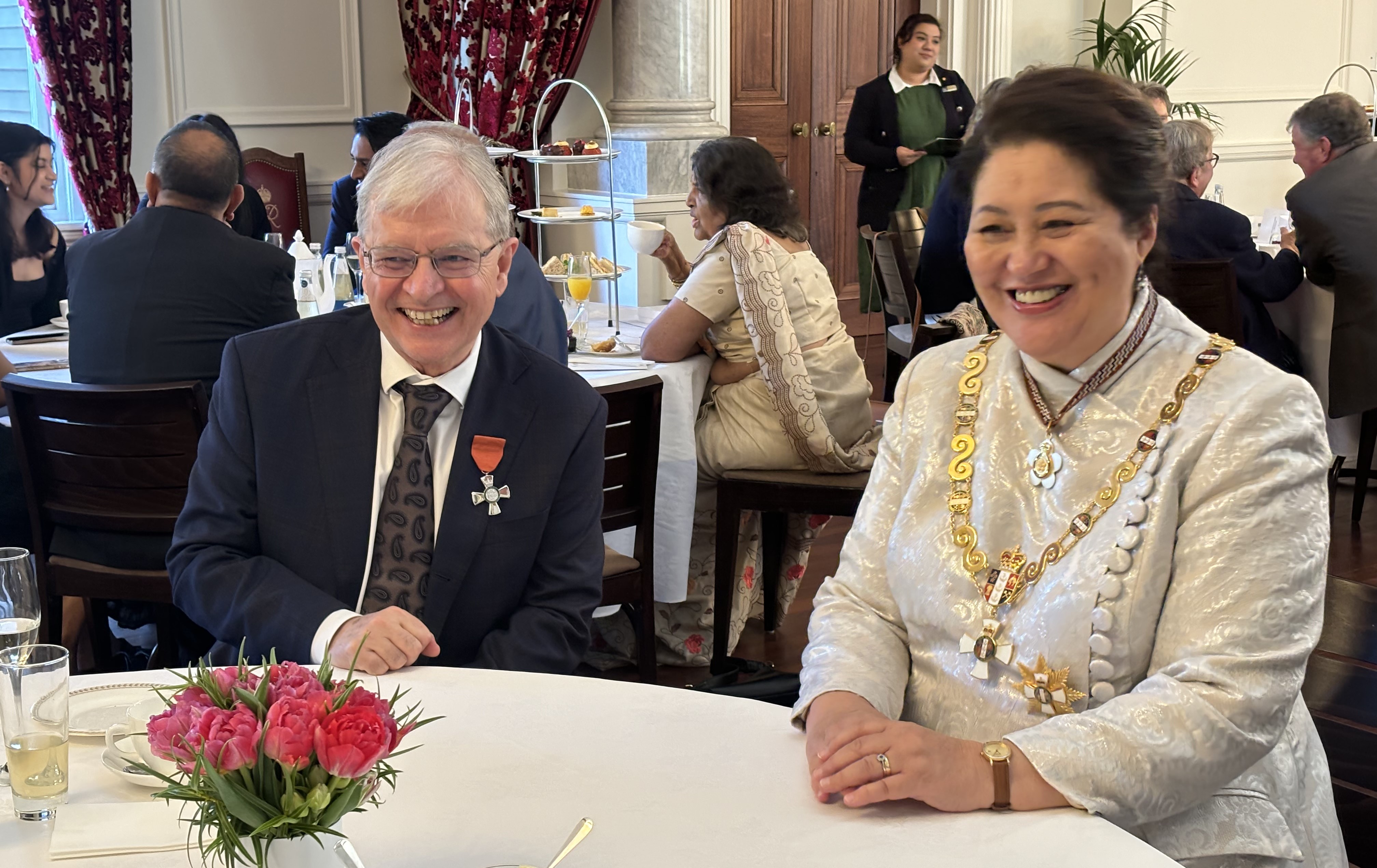Distinguished Scientist recognised in King’s Birthday Honours
Callaghan Innovation Distinguished Scientist Keith Jones today became a Member of the New Zealand Order of Merit for services to metrology in the 2024 King’s Birthday Honours.

Update: On 10 September Keith Jones received his insignia as a Member of the New Zealand Order of Merit for services to metrology from, Dame Cindy Kiro. What a wonderful event, celebrating a lifetime of service.
The science of measurement, metrology ensures accurate and consistent measurements that support Kiwi exporters and consumers by underpinning regulatory compliance. It also supports technological innovation, helps to enhance product quality, and underpins scientific research, and in doing so drives economic growth and improves quality of life.
“I was humbled at the thought of the effort that some of my colleagues must have gone to but also really pleased to hear the news. It is not just my contribution that is being recognised, it is also a significant recognition of all the good work that MSL does,” he says.
Keith joined the Measurement Standards Laboratory (MSL) after graduating in 1979 with a master’s in physics from Auckland University and has served metrology in Aotearoa New Zealand, and internationally for over four decades with commitment and distinction. Keith says, “measurement science underpins all science and is at the heart of the scientific process” which is why he has remained so passionate about his vocation since then.
“New theories are tested by carrying out experiments to see whether the theory can accurately predict the measured results from the experiments. This process is particularly clear in the physical sciences, and it is realistic to say that new science can begin at the next decimal place, a concept once aptly named ‘the romance of the next decimal place.”
“The benefits of trustworthy and accurate measurements permeate throughout society to make us safer, healthier, and more productive. Imagine not being able to trust that aircraft engineers had tightened bolts to the correct torque, milk had been pasteurised at the right temperature or that Kiwi manufactured products would be accepted in global markets.”
He quickly made an impact by establishing a national standard for capacitance, the capability of a material object or device to store electric charge, to serve industry needs.
An early international collaboration included work with international metrology experts to confirm the material-independence of the quantum Hall effect, which laid the foundation for the application of global quantum standards for electrical resistance measurement.
Keith led the MSL Electrical Standards team for more than a decade, establishing a reputation as a strategic thinker and technical expert with a deep understanding.
His reputation as a natural leader was further enhanced in 2000 when he was appointed as Chief Metrologist and Director of MSL. He went on to build the credibility of MSL in Aotearoa New Zealand and globally after it gained ISO 17025 laboratory accreditation, and after this country’s calibration and measurement capabilities were recognised by the International Bureau of Weights and Measures, which sets global measurement standards.
MSL Director Annette Koo says metrology here and around the world is better off for Keith's service. “His insight is underpinned by genuine respect and kindness towards others that lifts the thinking and the quality of delivery around him. MSL has keenly felt the benefit of his leadership in our laboratory – both formally as Director and Chief Metrologist – and informally through his mentoring of other staff. All New Zealanders benefit from his work to ensure reliable and accurate electrical metering. He has supported the maturing of measurement services internationally and his advice and analysis remain sought after.”
Keith is highly respected internationally for his knowledge and expertise, particularly in the Asia-Pacific region, where he helped support various nations to develop national metrology systems and infrastructure, including in Myanmar, the Philippines, and Chile.
As Chair of the Asia Pacific Metrology Programme (APMP), he championed international recognition of the measurement quality processes in the region. During his tenure, the relationship between the APMP and the International Bureau of Weights and Measures was fostered and strengthened, helping the region to develop a strong voice internationally.
In 2008 he received the APMP recognition award “In grateful recognition of your dedicated service and devotion to the Asia/Pacific Metrology Programme”. Keith’s technical contributions to the international community have helped earn Aotearoa New Zealand membership of the Consultative Committee for Electricity and Magnetism, the international committee overseeing aspects of the electricity domain of the Metric Treaty.
Looking ahead Keith says scientific advances are making it much easier for people to access accurate measurement information. “Increased reliance on digital and even AI systems promise more efficient transmission of calibration information but will potentially also complicate the auditing processes that confirm that the measurement results can be trusted.
“In the future businesses will need to have a good understanding of the new approaches that will be adopted internationally. Exporters will likely face increasingly demanding measurement requirements for the acceptance of products in valuable global markets.
“For businesses moving into genuinely new territory, say for example those looking to incorporate quantum effects in some way, it will be particularly important to look carefully at the quality infrastructure they need in Aotearoa New Zealand to support their business.
Keith says he is not concerned most consumers will continue to be largely unaware of the crucial role metrology has played in improving the quality of the products they purchase.
“I take my satisfaction from working with MSL colleagues and industry to improve measurement capabilities and industry competence. It is pleasing to see how our improvements in accuracy have fed through to industry for the benefit of consumers.”
